Fractal Design Define R4 Case Review: Evolution, Not Revolution
by Dustin Sklavos on July 20, 2012 6:00 AM EST- Posted in
- Cases/Cooling/PSUs
- mid-tower
- Fractal Design
Noise and Thermal Testing, Stock
For testing the Fractal Design Define R4, I made a decision that's probably going to seem a little controversial: I elected to remove the middle drive cage. My rationale is consistent with a decision I made when I decided to revise our testing methodology, which is to test cases the way they would most likely be assembled with our testbed. I suspect the R4's middle drive cage is going to be removed by the vast majority of users, as they simply won't need it when the case already supports two 2.5" drive mounts behind the motherboard tray and three drive trays in the bottom cage. So unless you have a great need to load up the R4 with drives, odds are that cage isn't staying in.
I also tested the case with all three fan settings to give an idea of how well the fan control works and what the ideal setting might be for most users. It's easy to forget, though, that if you need an extra kick of cooling performance it's very easy to just bump the R4 up to the 12V setting and then switch it back down when you're not running as heavy a load.
Ambient temperatures during testing hovered around ~24C.
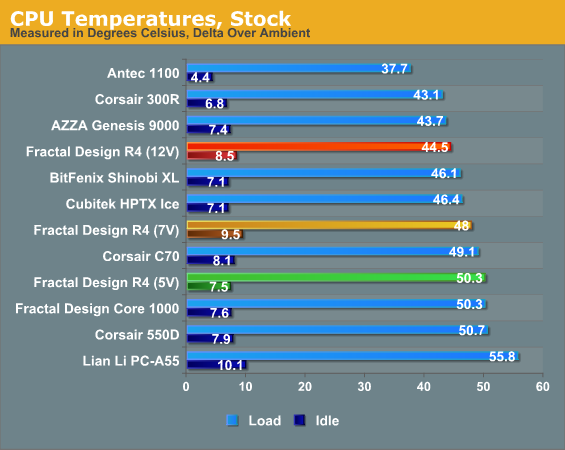
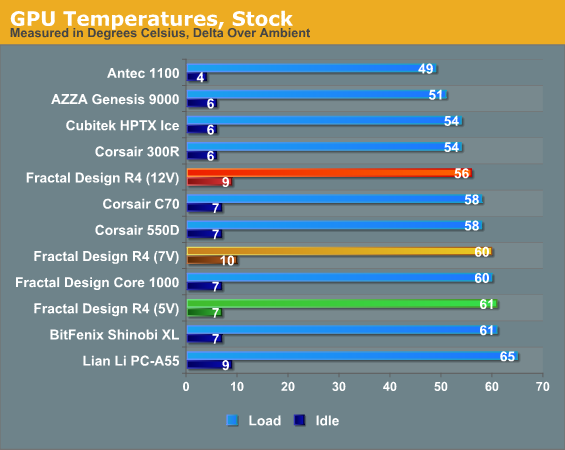
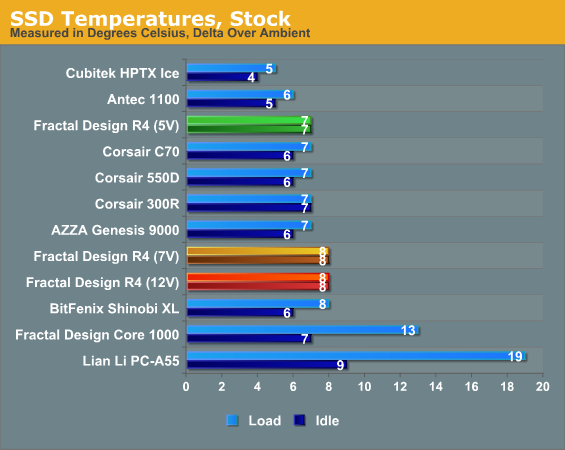
At the risk of spoiling the rest of the review results, I will tell you the fan controller's 7V setting is easily the best balance between performance and acoustics. While all three settings are below 30dB, the 7V setting is virtually impossible to distinguish from the 5V. Our major competitor for the R4 is going to be the Corsair Obsidian 550D, but keep in mind the 550D is also at least $30 more expensive.
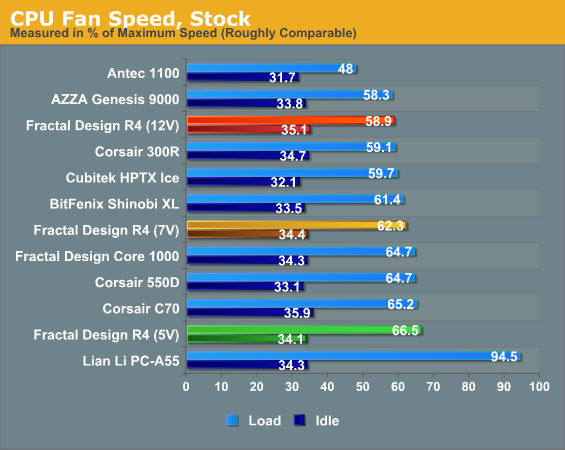
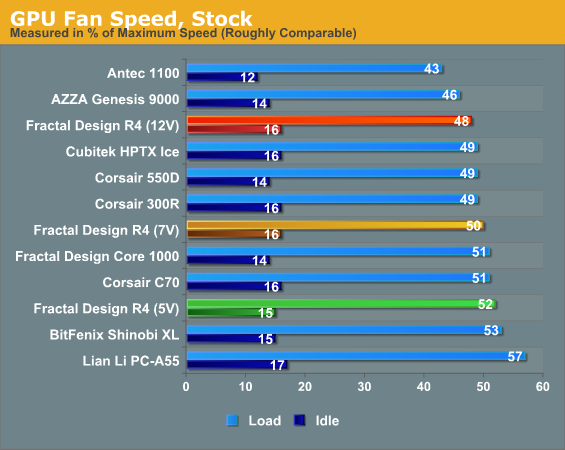
Fan speeds are all basically comparable and competitive with very little notable variation. What's interesting is the remarkably even spread between the three fan controller settings (keeping in mind that the CPU fan and GPU fan are governed not by the case fan controller but by the motherboard and graphics card respectively). It'll be interesting to see if this even spread remains consistent under our overclocked testing.
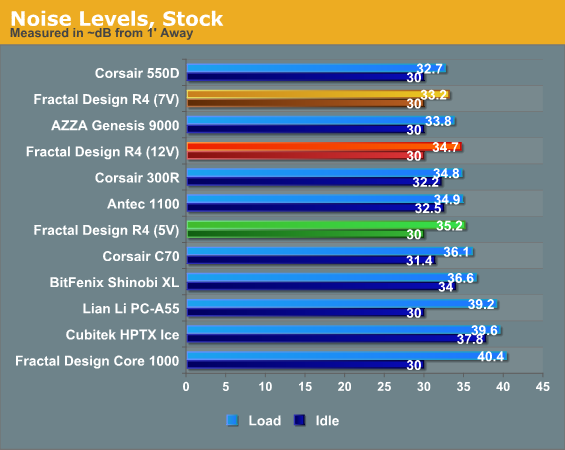
There are a couple of vital points to make here. First is that because our sound meter doesn't register below 30dB, the chart doesn't tell the whole story. Noise at idle between 5V and 7V fan controller settings is nigh indistinguishable, but the 12V setting does produce a noticeable increase. It's still very quiet, but there's a low-pitched whooshing that becomes audible.
The second point is something I've become very keen to point out whenever possible: running fans too low can actually result in higher noise levels than finding a more optimal fan speed might. When the case's cooling system isn't producing adequate airflow, the cooling on the graphics card and CPU has to pick up the slack, and that's how you wind up with test results where the middle fan setting is actually quieter than the low fan setting. This is something I've experienced even with my personal desktop, and it's absolutely worth keeping in mind on any build.










54 Comments
View All Comments
buildingblock - Friday, July 20, 2012 - link
The move to 140mm fans for intake and exhaust is particularly welcomed, time to move on from the 120s.HisDivineOrder - Friday, July 20, 2012 - link
I'll agree with you once all the PWM fan makers start making fans in 140mm varieties. Right now, for great fans you choose between PWM and 140mm. That's not a choice that you should have to make.You'd think Corsair would be on the forefront of fixing this, seeing as they just released a premium fan line AND have cases that could use said fans. But no, they in fact released NO PWM fans at all.
Until that day, 120mm needs to stay the standard.
prophet001 - Friday, August 10, 2012 - link
Here is a link to some 140mm PWM fans. I just used the Akasa Vipers in my build and they're great fans. They can move as much air as your need or they can throttle to very quiet levels. I highly recommend them.http://www.frozencpu.com/cat/l3/g36/c365/s1507/lis...
btb - Friday, July 20, 2012 - link
I have both and R2 and R3 and really like them. The only thing I wish they would improve on is getting rid of the ugly top of the case, it detracts significantly from an otherwise very nice looking case. How big a percentage of the buyers of these cases do actually use the top exhausts? I'm guessing below 5%.Dustin Sklavos - Friday, July 20, 2012 - link
Well, the idea is to make space for a 240mm radiator or a closed-loop like the Corsair H100, but the problem is that clearance for radiators there just isn't good.piroroadkill - Friday, July 20, 2012 - link
Yeah, I think they need to use a Lian-Li style blanking plate, where it fits almost completely flush, leaving a smooth finish, but the user then has to supply a wire grill later.beginner99 - Friday, July 20, 2012 - link
I use it! make sense to have airflow from bottom/front to top as hot air flows up naturally anyway.piroroadkill - Friday, July 20, 2012 - link
This article has disappeared from the homepage! I can't read it anymore :(piroroadkill - Friday, July 20, 2012 - link
Ah, NDA, NDA, thought so. It's all good!themossie - Friday, July 20, 2012 - link
Neither the "next page" or menu to choose article pages is working - they both return me to the Anandtech.com page.Other articles work fine.
Is this just me, or is something wrong?